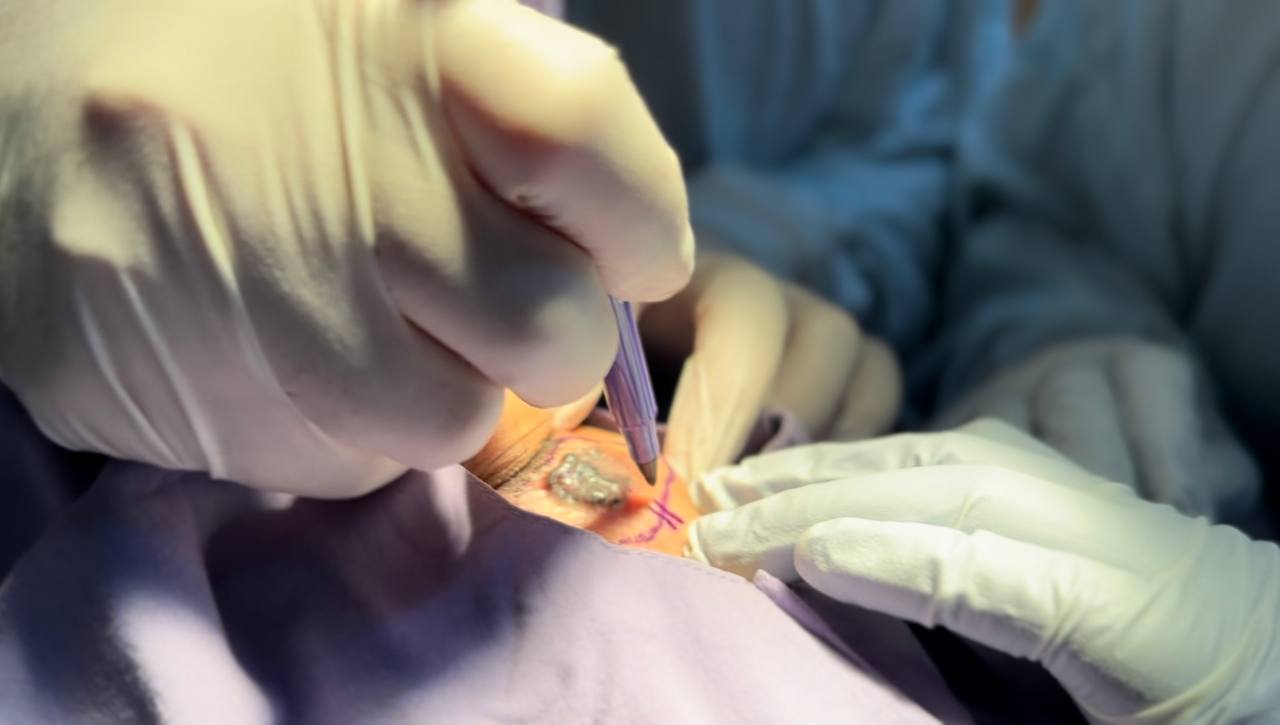Mohs Micrographic Surgery (MMS)
Our Flagship Service

What is Mohs micrographic surgery?
Skin cancer is one of the most prevalent malignancies in the world, seen commonly among caucasians. However, with the continuous thinning of the ozone layer, changing of lifestyles, fondness of recreational activities under the sun, and trends in clothing, a rising number of cases is seen even among Asian counterparts. Although most people perceive the disease to be less serious, it still poses a threat to life or destroys vital structures of the body.
Mohs Micrographic Surgery (MMS) offers the highest cure rate for most cases of skin cancer. It is the microscopically-controlled excision of skin cancer. The procedure involves the excision of abnormal tissue in successive layers and microscopically scanning the entire undersurface of each layer through the systematic use of horizontally-cut frozen sections.

The method of MMS includes color-coding of specimens with tissue dyes, accurate orientation of excised tissue through mapping, and microscopic examination of horizontal frozen sections. In doing so, all tumor extensions are pursued until the field is deemed negative for malignancy. The main advantage of MMS is a higher cure rate for skin cancer than any other method due to the precise and complete removal of the tumor, maximum conservation of normal tissue, and preservation of important anatomic structures.
The indications for MMS should be clear to both doctors and patients. It is recommended for recurrent tumors, tumors with a high likelihood of recurrence, tumors with indistinct visual margins, and those that may result in disfiguring surgery.
Indications for Mohs Surgery
These are a few of the tumors with high recurrence rates following traditional treatment:
Recurrent Tumors
- Tumors with indistinct clinical margins
- Tumors in locations noted for frequent recurrence (around the eyes, nose, ears, temple, and scalp)
- Tumors in young women
- Tumors for which conservation of tissue is important
Eyelid Tumors
- Tumors on fingers/toes
- Tumors on penis
- Tumors that may require complex surgical repairs or that are likely to have poor cosmetic result after traditional treatments (particularly on the nose and ear area)
Specific Tumors Amenable to MMS
- Basal Cell Carcinoma
- Atypical Fibroxanthoma
- Squamous Cell Carcinoma
- Keratoacanthoma
- Dermatofibrosarcoma Protruberans
- Granular Cell Tumor
- Merkel Cell Carcinoma
- Bowen’s Diseases
- Verrucous Carcinoma
- Erythroplasia of Queyrat
- Malignant Fibroshistiocytoma
- Microcystic Adnexal Carcinoma
- Cylindromas
- Adenocystic Carcinoma
- Nevus Sebaceus
- Extrammammary Paget’s Disease
- Eccrine Poroma
- Leiomyosarcoma
- Sebaceous Carcinoma
- Hemangiosarcoma
- Lentigo Maligna
- Amelanotic Melanoma
- Melanoma
Other Diseases Amenable to MMS
- Basal Cell Nevus Syndrome
- Xeroderma Pigmentosum
- Bloom’s Syndrome
- Previous trauma (burn/vaccination)
- Gangrene
Important Note
The Mohs surgeon is highly capable in managing cutaneous tumors. However, in dealing with some complicated cases, the Mohs surgeon can work in conjunction with specialists, such as an otolaryngologist, oculoplastic surgeon, or plastic surgeon.
Have questions for our doctors?
Message us so we can discuss your needs.